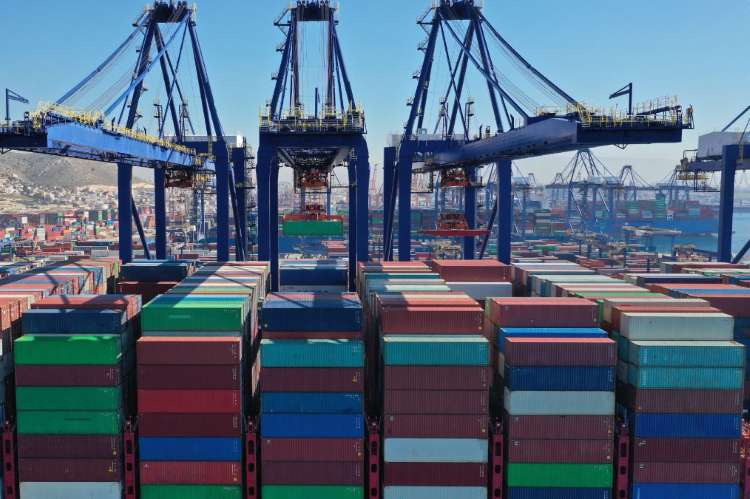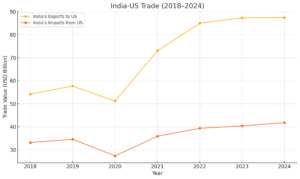
India’s response to Trump tariffs: Donald Trump’s rhetoric around reciprocal tariffs hinges on a deceptively simple premise. If another country taxes American goods at a certain rate, the US should respond in kind. This “you tax us, we tax you” strategy, he argues, would rectify unfair trade practices and help reduce the US trade deficit. In theory, the threat of reciprocal tariffs would pressure countries to lower their trade barriers. In practice, however, it risks triggering tit-for-tat tariff escalations, disrupting global supply chains, stoking inflation, and fuelling market volatility.
The world economy is now deeply interconnected, and any protectionist shock from the United States is bound to send tremors through global markets. According to available reports, Trump’s proposed tariff plans include a steep 26% duty on Indian goods. That could significantly hurt India’s exports to the US, making them less competitive and placing strain on industries that rely on American markets.
READ I Interest rate cuts alone won’t fix India’s spending slump
India’s non-confrontational approach
Ironically, India has recently taken a step in the opposite direction. In a move aimed at easing trade tensions, it scrapped the 6% equalisation levy—popularly known as the Google Tax—on digital advertising services offered by foreign tech firms. The removal, effective April 1, 2025, was a clear gesture towards resolving longstanding friction with the United States. The timing makes it starker: just as India pulls down barriers, the US seems ready to erect new ones.

Still, trade isn’t a zero-sum game—it’s about negotiation, leverage, and long-term alignment. India’s Commerce Ministry is actively engaging with US trade representatives, stressing the mutual benefits of a balanced trading relationship. Among the key topics under discussion: greater market access for Indian pharmaceuticals in the US, and in return, increased access for American agricultural products in India. There are also ongoing efforts to secure tariff concessions for Indian goods, aiming to defuse tensions before they spiral into a full-blown trade war.
India’s approach to Trump tariffs must be measured, strategic, and forward-looking—not reactive. Retaliatory tariffs might satisfy political instincts but could ultimately hurt Indian exporters and consumers alike. Instead, India must adopt a calculated strategy that turns emerging trade challenges into economic opportunities.
For instance, if Trump tariffs target countries like China, Vietnam, or Bangladesh, Indian exporters could step in to fill the vacuum in sectors like textiles, garments, and leather goods. India’s large, low-cost labour force gives it a natural advantage in these industries—one it must seize while the global trade landscape is in flux.
Trump tariffs prompt trade diversification
Another core strategy is diversification. India is already pursuing Free Trade Agreements (FTAs) with countries across Europe, Asia, and Africa, including a high-profile deal with the United Kingdom. These efforts are essential to reduce over-dependence on the US market and create a buffer against future shocks.
The global trade order is being reshaped by geopolitical rivalries, technological disruption, and changing consumer preferences—factors now compounded by the threat of new tariffs. India must identify sectors where it can sharpen its competitive edge and position itself as an indispensable player in the evolving supply chains.

There’s momentum already. Global firms are shifting manufacturing operations away from China, and India is emerging as a viable alternative. Apple’s growing footprint in Indian electronics manufacturing is a case in point. To capitalise on this trend, India must continue investing in infrastructure, streamlining regulation, and boosting ease of doing business.
The textile and apparel sector is another clear opportunity. The US has imposed higher tariffs on Chinese textiles, opening up space for Indian exporters. India, one of the world’s largest producers of textiles, must aggressively expand its presence in this now more accessible market.
Renewable energy is yet another sector ripe for expansion. With abundant sunshine and rich mineral resources, India has the potential to lead the global green energy transition. Already, solar panel production is ramping up, and Gujarat’s Jamnagar region is being positioned as a hub for green hydrogen and related technologies. But scaling up will require sustained investment in ports, transportation, and energy infrastructure to support exports.
By aligning its trade strategy with domestic reforms, India can reduce vulnerability to external shocks and build resilience. The goal is not just to shield the economy, but to harness disruption for long-term gains.
Trump tariffs, if implemented, could indeed deliver a heavy blow—not just to India, but to global consumers and industries already grappling with inflation and stagnation. For American households, higher tariffs would translate into steeper prices for everyday goods, further eroding purchasing power. For industries already facing soft demand and sluggish growth, it could trigger a dangerous contraction. This isn’t just poor policy—it’s a high-stakes gamble that risks pushing the global economy closer to the brink.
In response, India must walk the tightrope between assertiveness and pragmatism—leveraging diplomacy, diversifying markets, and deepening its economic strengths. The goal isn’t just to survive the shifting trade winds, but to emerge stronger from the storm.
Dr. Megha Jain is Assistant Professor, Shyam Lal College, University of Delhi. Vanyaa Gupta is an independent economist based in Delhi.
